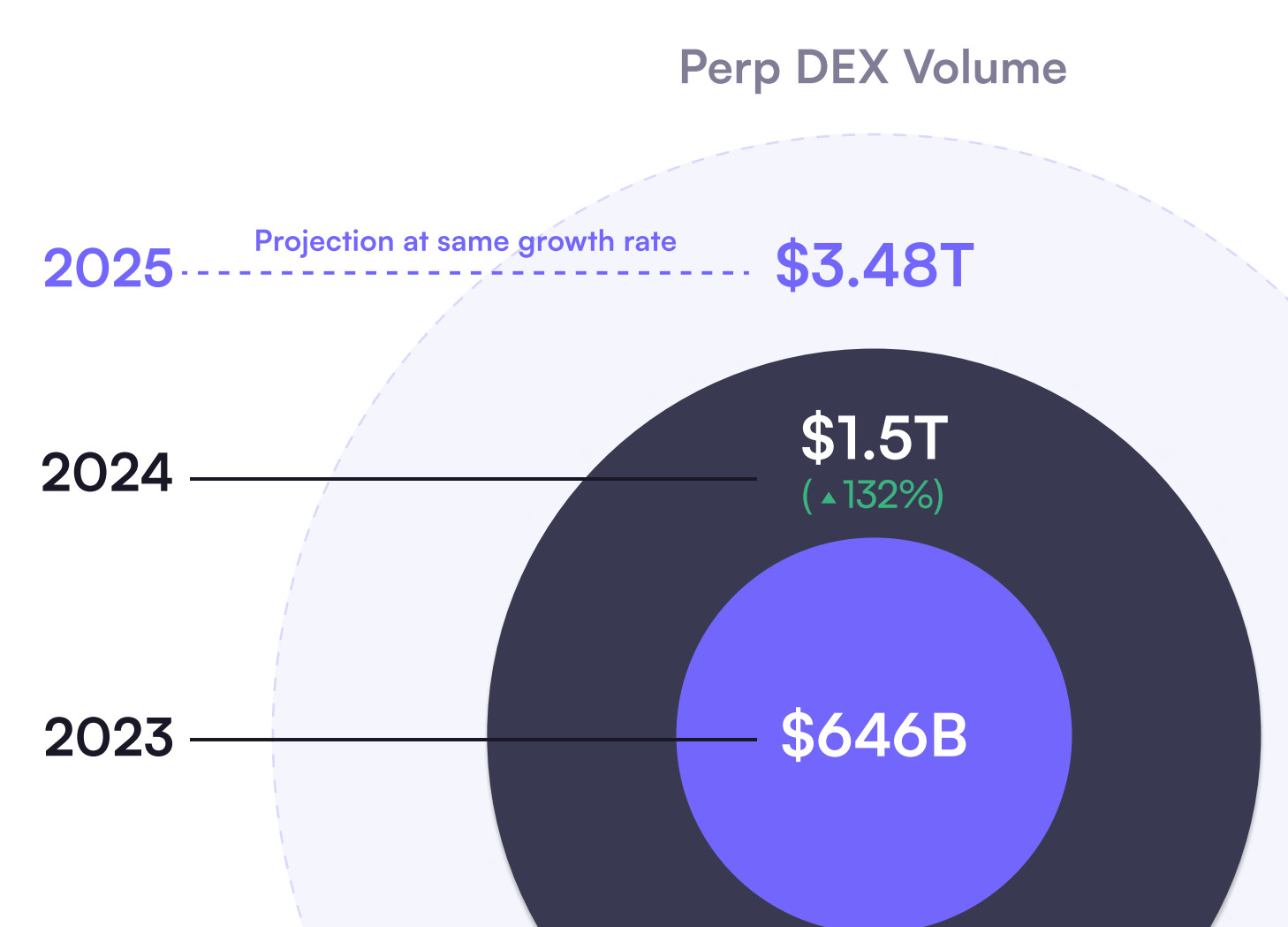The Rise of DEXs: Why Decentralized Derivatives Trading is Booming

A New Era for Crypto Trading
Decentralized exchanges (DEXs) are rapidly reshaping the trading landscape. With derivatives trading volumes projected to more than double this year, an increasing number of investors are turning to DEXs as a cheaper, more liquid alternative to centralized platforms.
According to the dYdX Annual Ecosystem Report 2024, last year saw an astonishing 132% surge in DEX derivatives volumes, reaching a record $1.5 trillion. The shift is undeniable—DEXs are emerging as a critical hub for both derivatives and spot trading.
Explosive Growth in Perpetual Trading
One of the key drivers behind this trend is the rapid adoption of perpetual swaps on DEXs. Throughout 2023, perpetual DEX volumes skyrocketed from $81 billion in January to $242 billion by December. If this pace continues, the total DEX trading volume could hit a staggering $3.48 trillion in 2025.
But why the sudden surge? For one, decentralized platforms offer lower fees and greater access to speculative assets. This has become particularly evident in the Solana ecosystem, where DEX volumes soared during a frenzied memecoin rally, even surpassing Ethereum and Base combined in early January.
 Cryptocurrency Trading on DEXs
Cryptocurrency Trading on DEXs
Perpetual DEX trading volumes have surged since 2023, and the trend is expected to continue in 2024. Source: dYdX
Could New US Regulations Accelerate the Shift to DEXs?
While the growing popularity of DEXs is driven by market efficiency, regulatory changes in the United States may also play a role in pushing more traders toward decentralized platforms.
As of 2024, the US Internal Revenue Service (IRS) now requires centralized exchanges to report digital asset transactions. While this measure aims to assist investors in filing accurate tax returns, some industry insiders see it as an overreach.
Notably, government blockchain expert Anndy Lian has warned that strict reporting requirements could drive users towards decentralized platforms like Uniswap and PancakeSwap. Although DEXs aren’t currently subject to the new requirements, blockchain analytics advancements and future regulations—expected by 2027—could change that.
Industry Pushback Against the IRS
The IRS’s regulatory push hasn’t gone unchallenged. In December, the Blockchain Association filed a lawsuit against the IRS, arguing that the agency was overstepping its authority and violating administrative procedures.
This lawsuit highlights a larger debate around how decentralized finance (DeFi) should be regulated. As governments look to crack down on crypto tax compliance, the resilience and adaptability of the DeFi ecosystem will be put to the test.
The Future of DEXs: What’s Next?
With DEX derivatives trading volumes soaring, traders and institutions alike are beginning to recognize the advantages of decentralized platforms:
- Lower transaction fees
- Greater liquidity
- Access to niche and emerging assets
- Minimal counterparty risks
However, challenges remain, particularly around potential future regulatory scrutiny. If governments find ways to enforce tax compliance on DEXs, the current advantages could be reshaped in the years ahead.
What remains clear is that the demand for decentralized, permissionless financial systems shows no signs of slowing down. As blockchain technology and crypto adoption continue to evolve, DEXs are poised to become even more integral to the global financial system.
📌 Related: Decentralized exchange volume hits record high of $462B in December

